Use of Cookies
Our website uses cookies to facilitate and improve your online experience.
In the ninth century there was in Tang China a Zen master called Dongshan Liangjie (Tozan Ryokai, in Japanese) who was eleven generations distant from Bodhidharma. Because of his great virtue he was awarded the title of Wuben (Gohon, in Japanese) Daishi, and the “To” of Soto School came from the first character of his name. Consequently, we should pronounce it “Soto” and not “Sodo” as many Japanese do. Once a monk in training asked Great Master Dongshan, “When heat and cold come, how can I avoid them?”
It was probably a scorching hot summer afternoon or a bitterly cold winter morning, and this heat (or cold) was so extreme the monk could not bear it.
Now you may think that the monk’s question has no relevance today when we can avoid heat and cold as we wish with air conditioning and central heat. But even though we have indoor cooling and heating, if we take just one step outdoors, we will find that a way to avoid the violence of nature has not yet been developed.
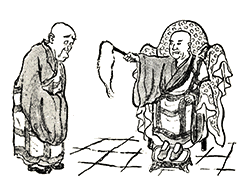
Dongshan said, “Why don’t you go where it’s neither hot nor cold?”
“What is this place of no heat or cold?” The training monk seems to have thought that in some distant land there was such a place, and to counter this Dongshan replied, “When it’s hot, become one with the heat; when it’s cold, become one with the cold. That is the place of no heat or cold.”
As long as we are living in natural surroundings, we cannot avoid heat and cold, but we can get rid of the mind which is fearful of, uncomfortable with, or uneasy around heat or cold.
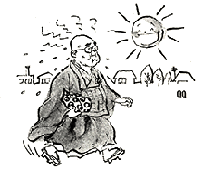
I become depressed around the time of the Festival for the Dead (O-bon). Thinking about having to go around from house to house for memorial services in the hottest part of summer makes me want to go to a country which has no heat. However, once I start making the rounds and get drenched with sweat, the heat no longer bothers me. In the same way, while I am shivering with hunched shoulders at the “kotatsu” stove at home, I just cannot seem to get into the mood to face a snowstorm; but once I get myself ready and leave to go skiing, even a snowstorm can be fun. So, heat and cold themselves are not troublesome or anything else; it is the anxiety and discomfort twined about them which makes us suffer. An old poem says:
“The ladle, coming and going In the Hell of Heat and Cold, Has no mind and suffers not.”
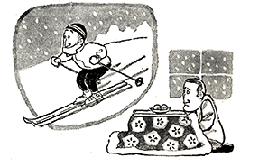
As it says in the poem, the ladle enters the boiling kettle and enters the cold water pitcher but feels no pain, because it has no mind.
Once when Ryokan fell victim to an earthquake he said to a visitor paying a condolence call:
“When you’re sick, it’s all right to be sick; and when you die, it’s all right to die.”
It is not only a matter of heat and cold. Birth, death, sickness and old age also are like this. Casting away delusive speculations and thoughts is the only Way to transcend birth and death and avoid the heat and cold.
In the sixteenth century, Kaisen Osho was supported by Shingen Takeda and was subsequently invited to live at Erinji in Koshu (Yamanashi Prefecture). When Shingen’s son Katsuyori was later attacked and defeated by Nobunaga Oda, most of the Takeda forces fled to Erinji. Hearing that Kaisen Osho had sheltered these people, Nobunaga became violently angry. He drove all of the monks up into the tower of the temple gate and set fire to the tower. At that time Kaisen turned to the other monks and calmly said,
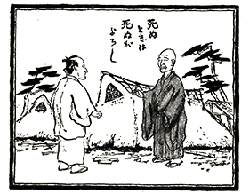
“Well, this is finally the end. Of course we are discharging our debt to the Takeda family, but in any case, we could not have simply handed over to the enemy people who had sought refuge in the sleeve of the robe of Dharma. We will die bravely and loyally with the others.” Having said this, he had each monk in turn recite a death verse, and finally he himself intoned the following: “Calm meditation doesn’t require peaceful surroundings. If the mind is clear, fire itself is cool.”
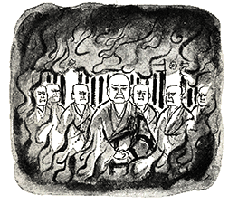
This verse appears in the Hekiganroku (Blue Cliff Record) in the chapter “Dongshan’s Neither Hot Nor Cold.”